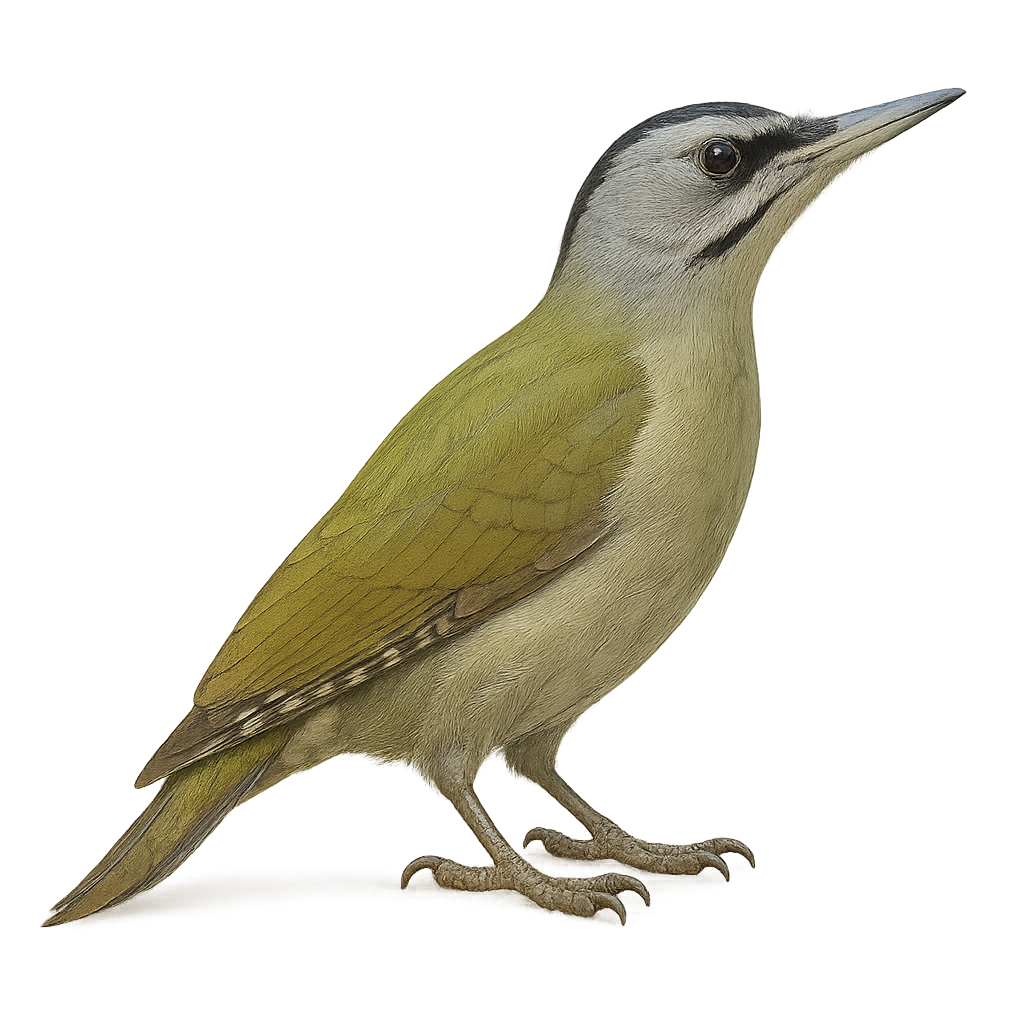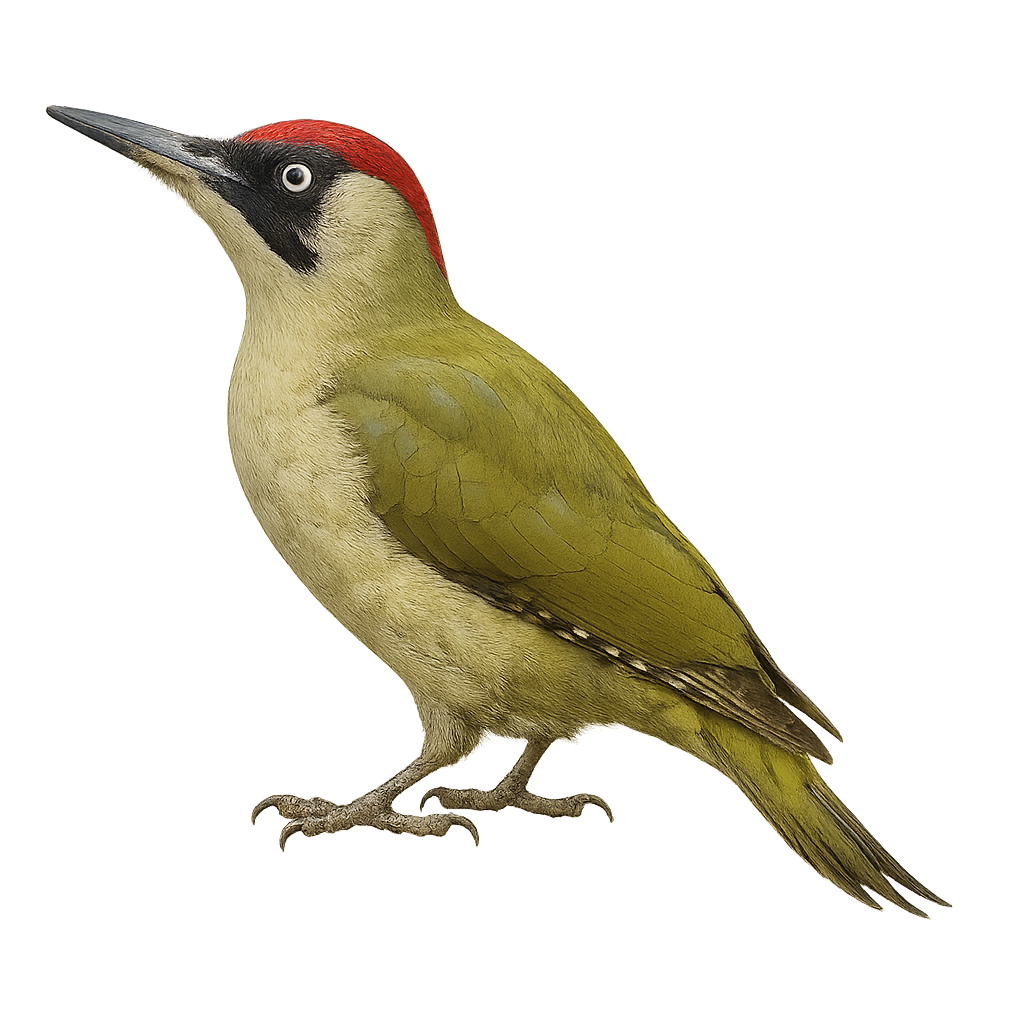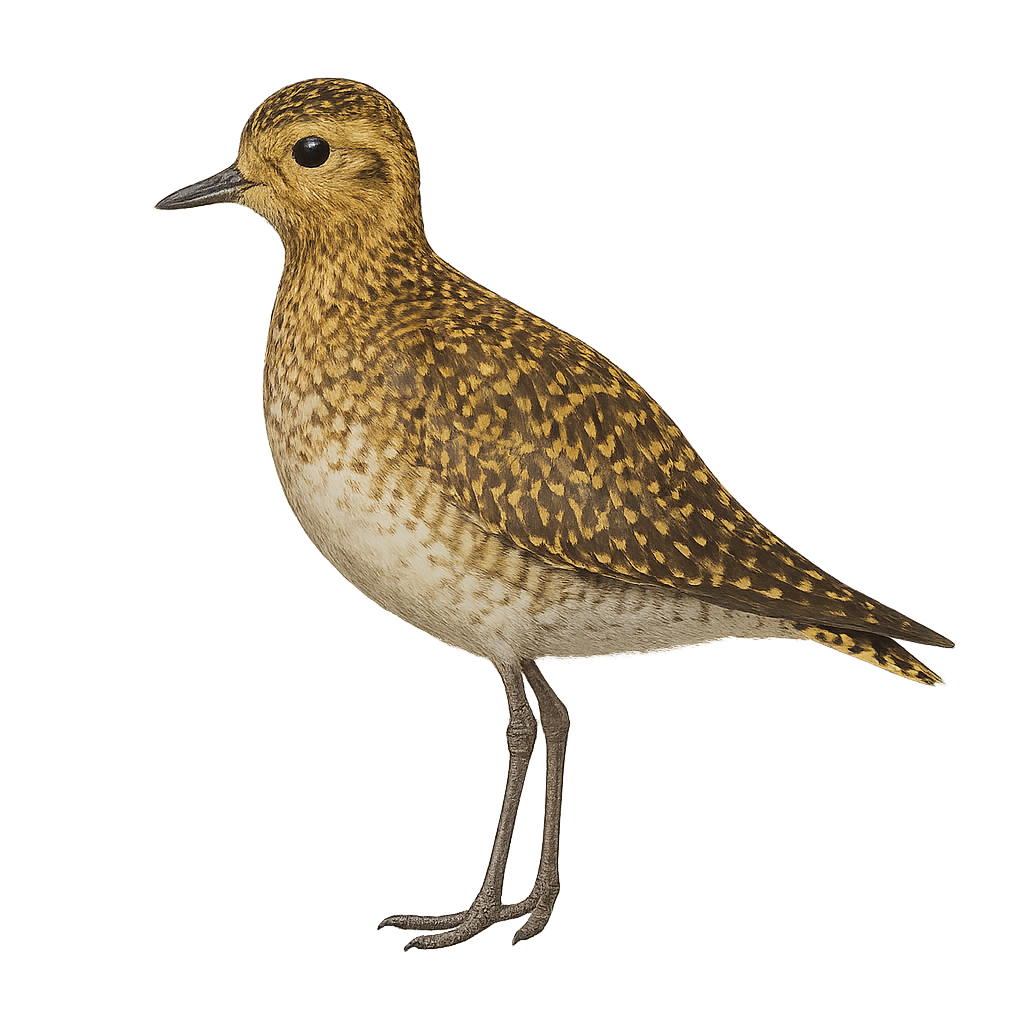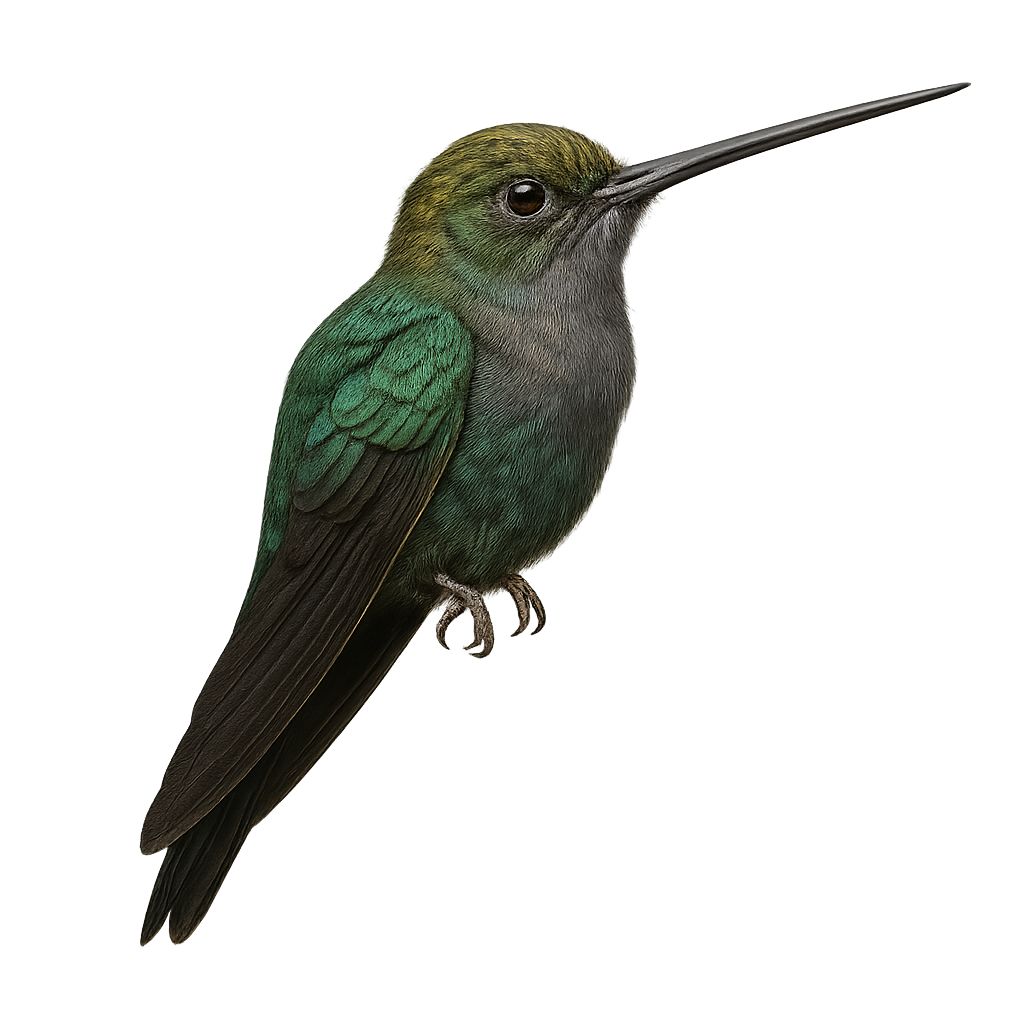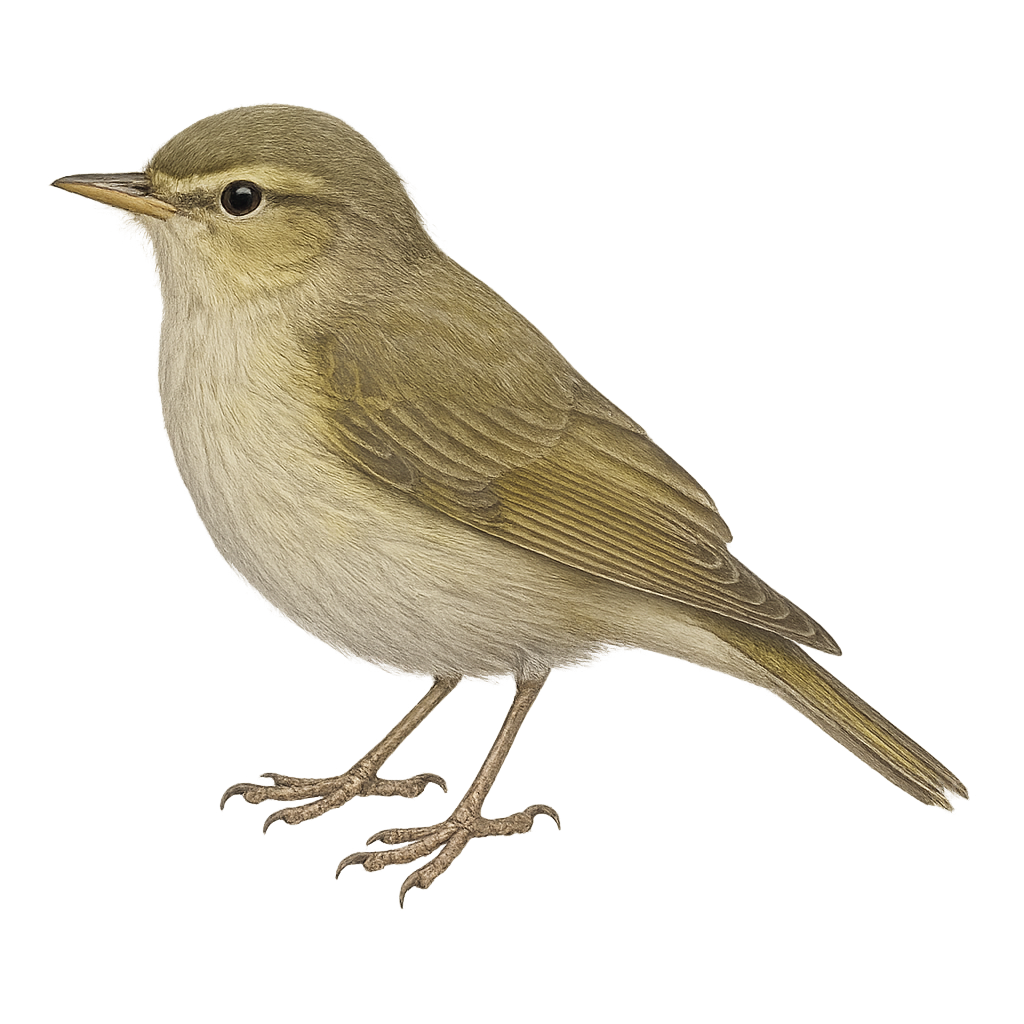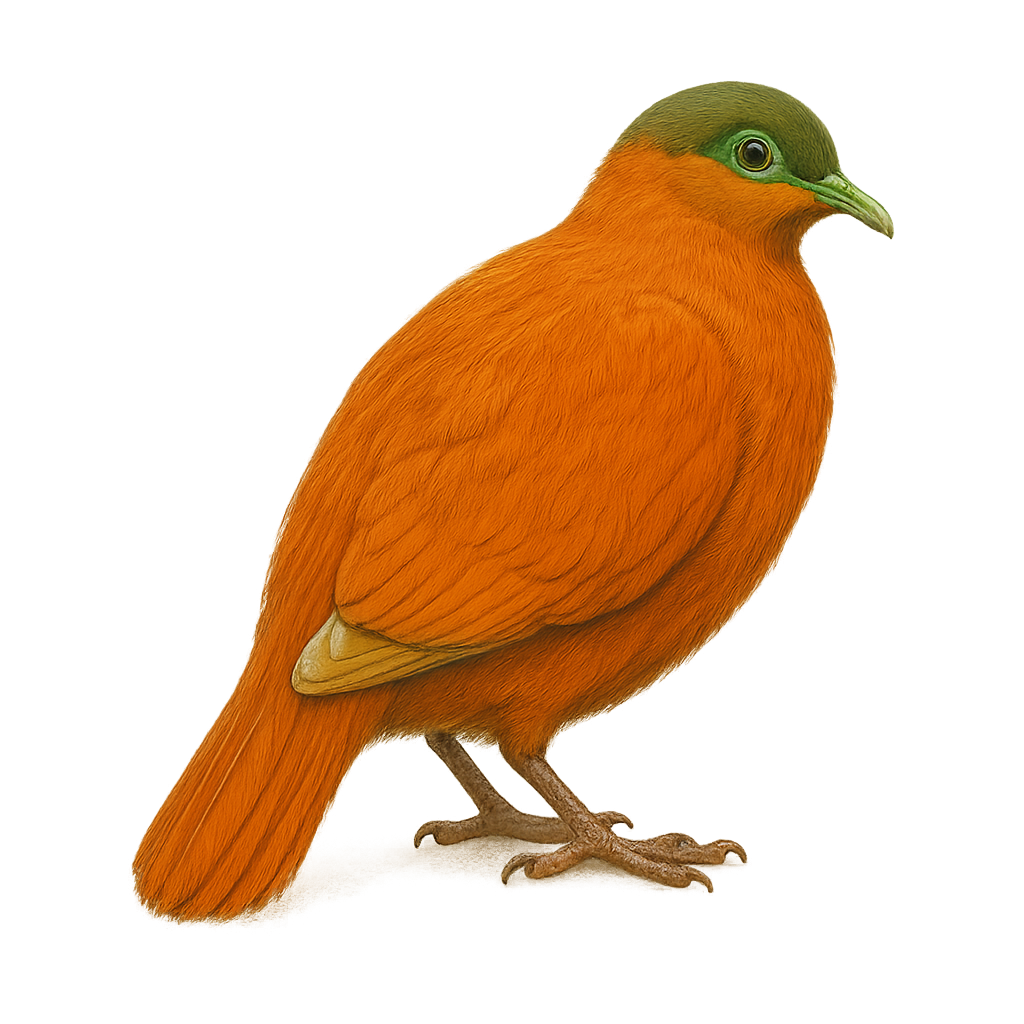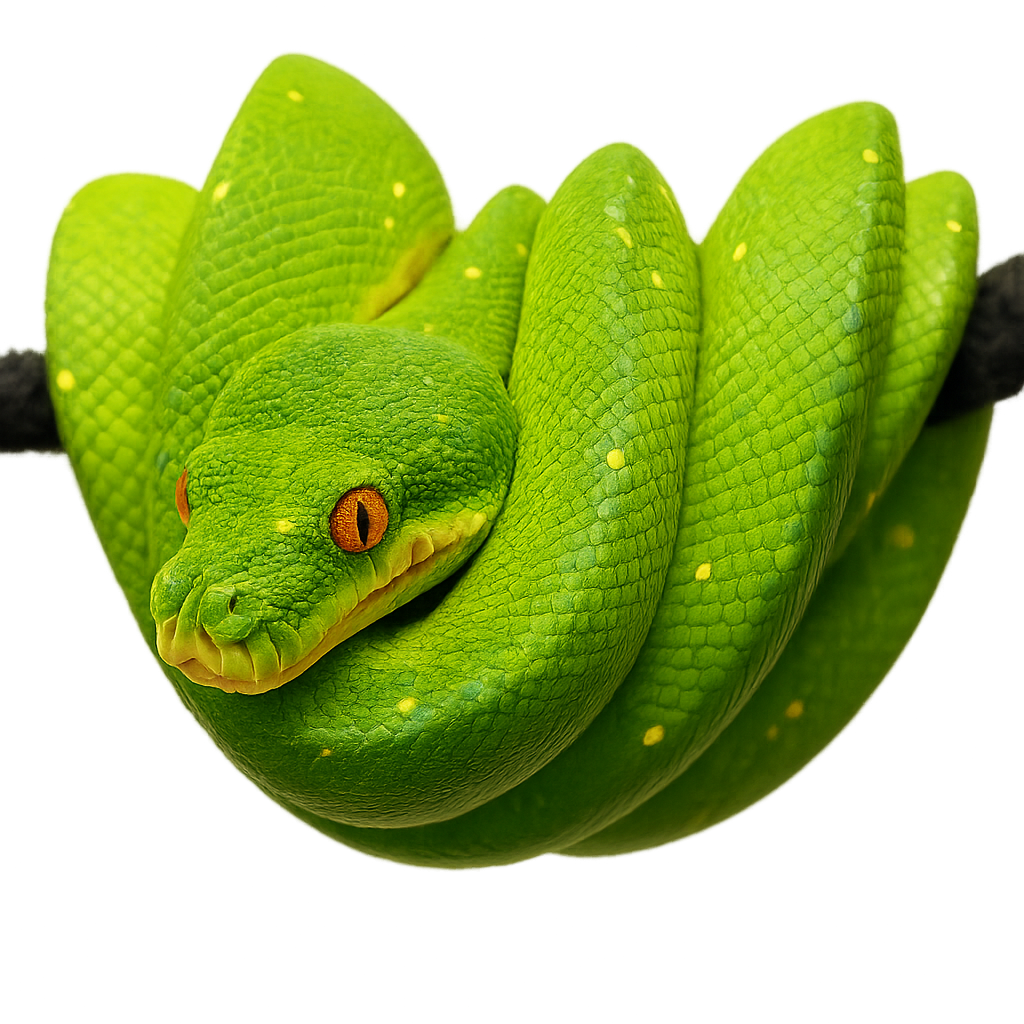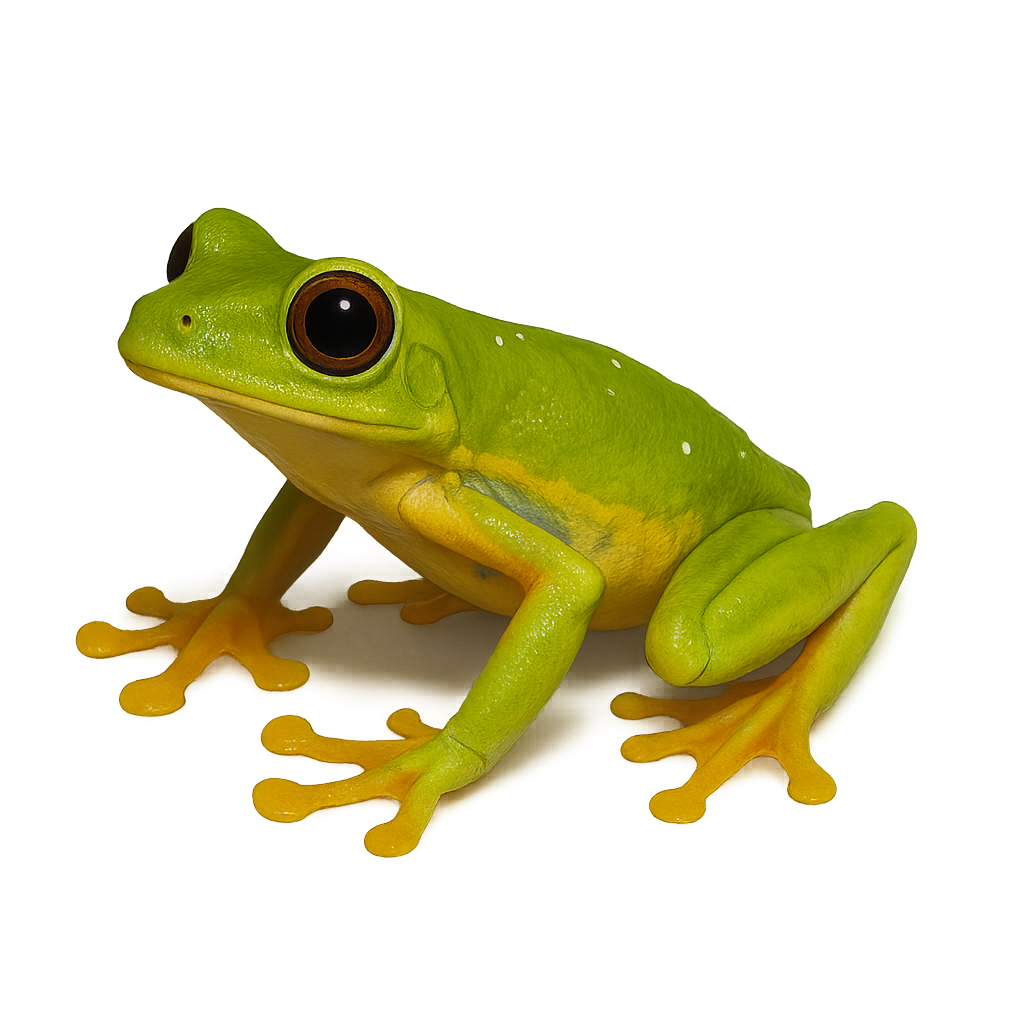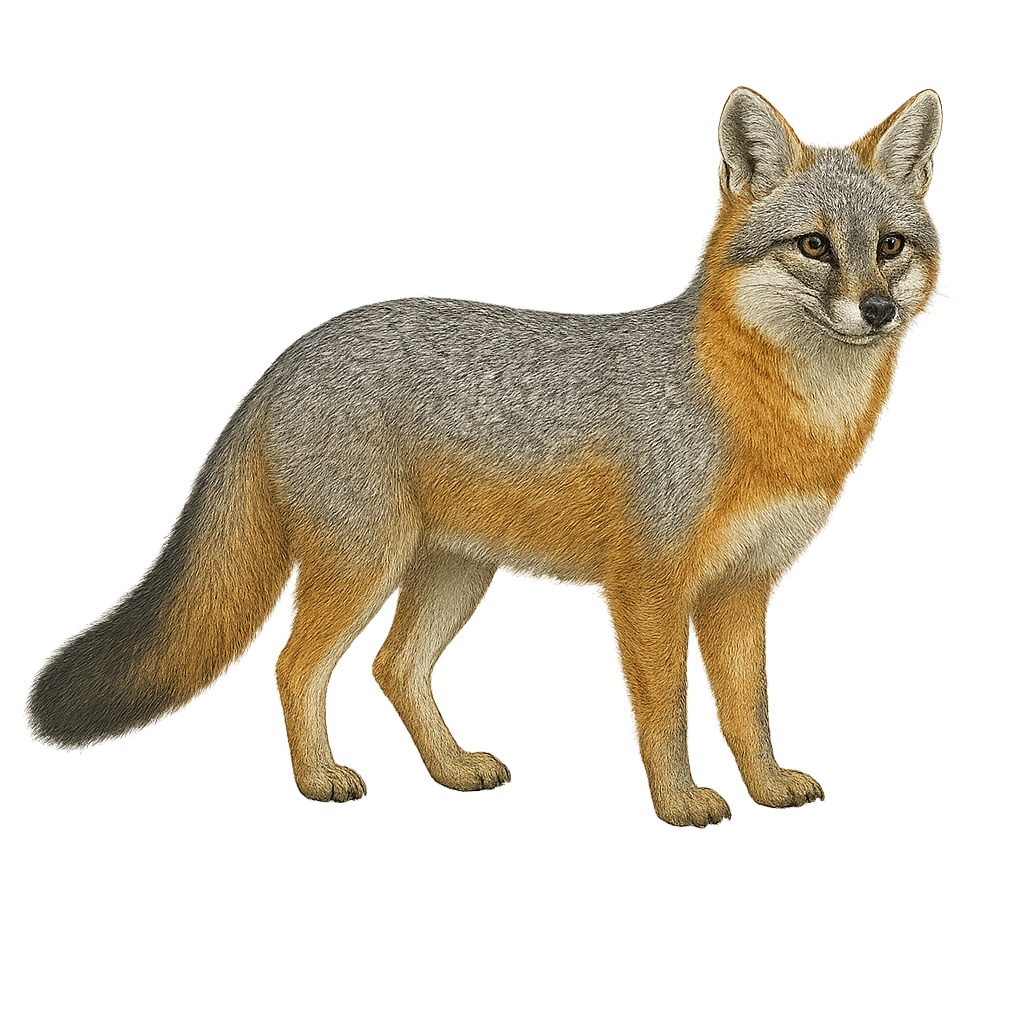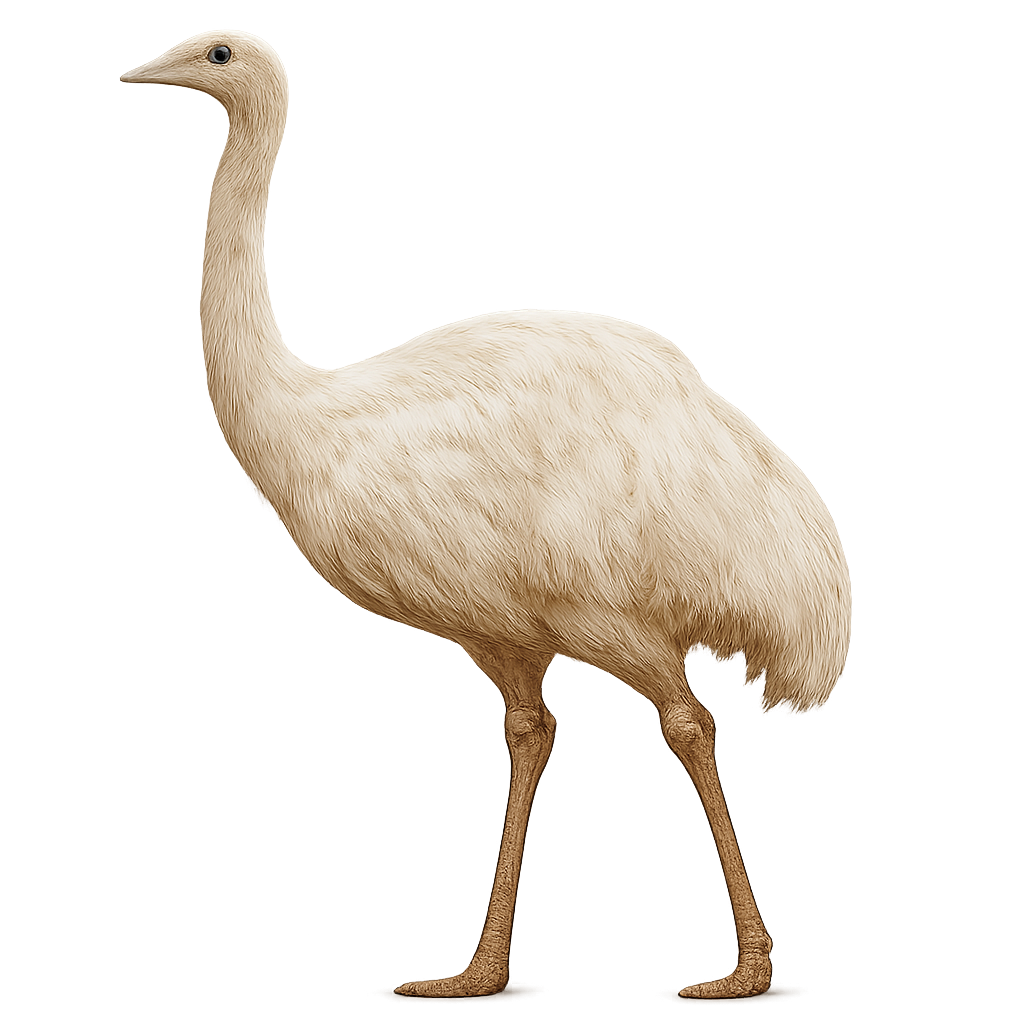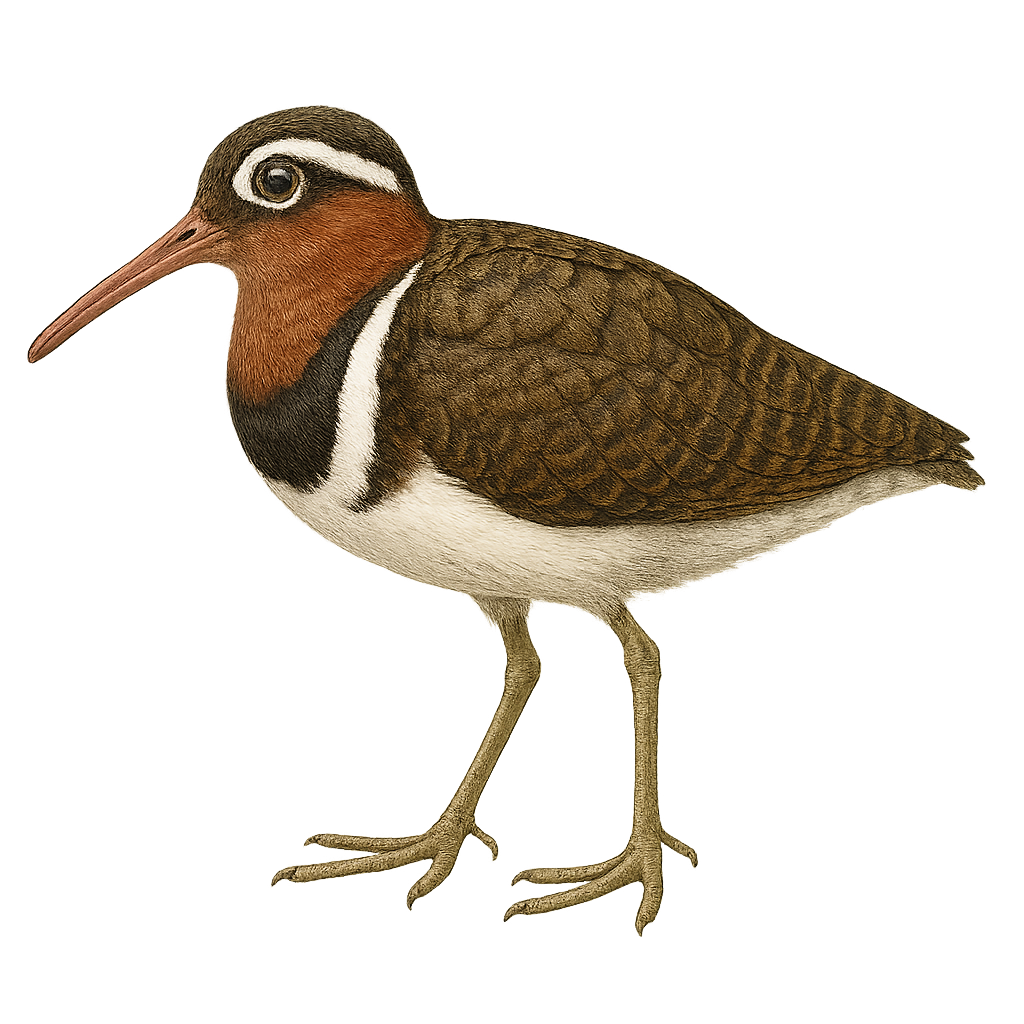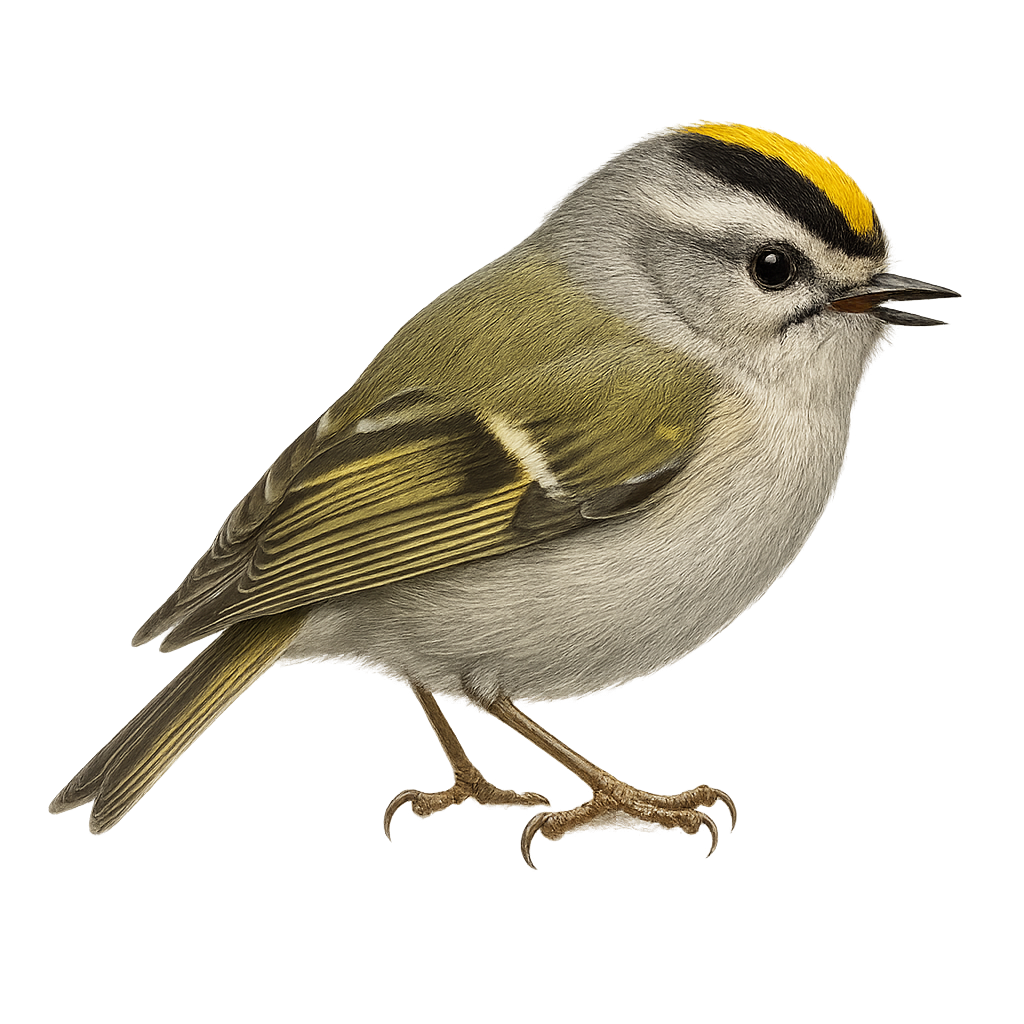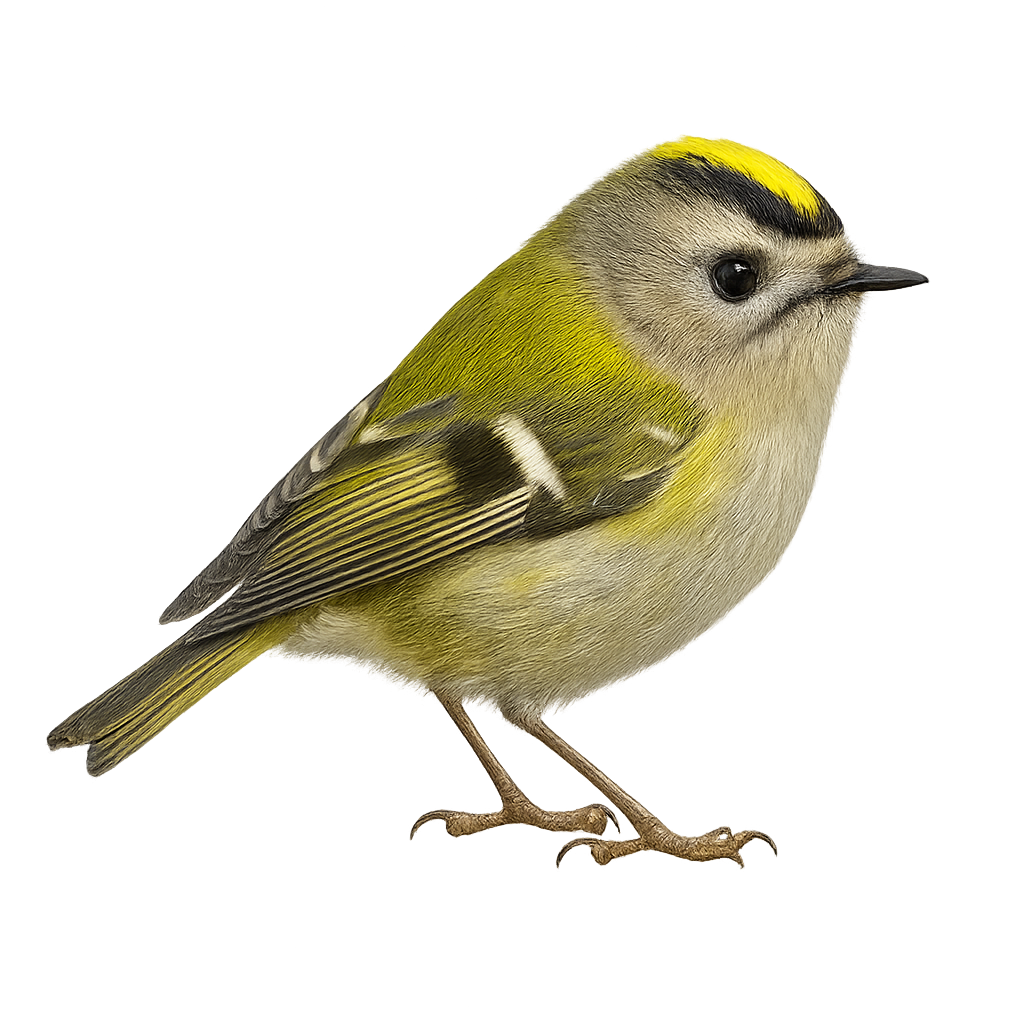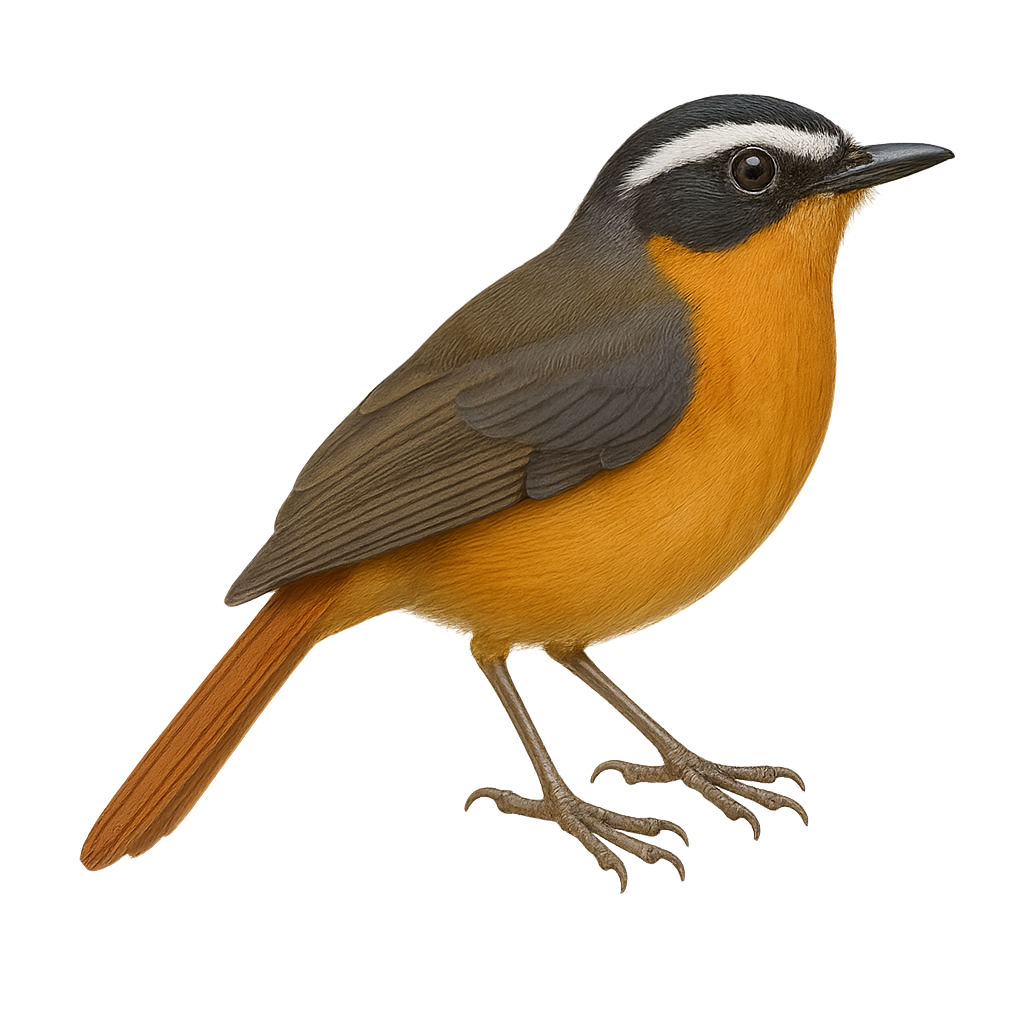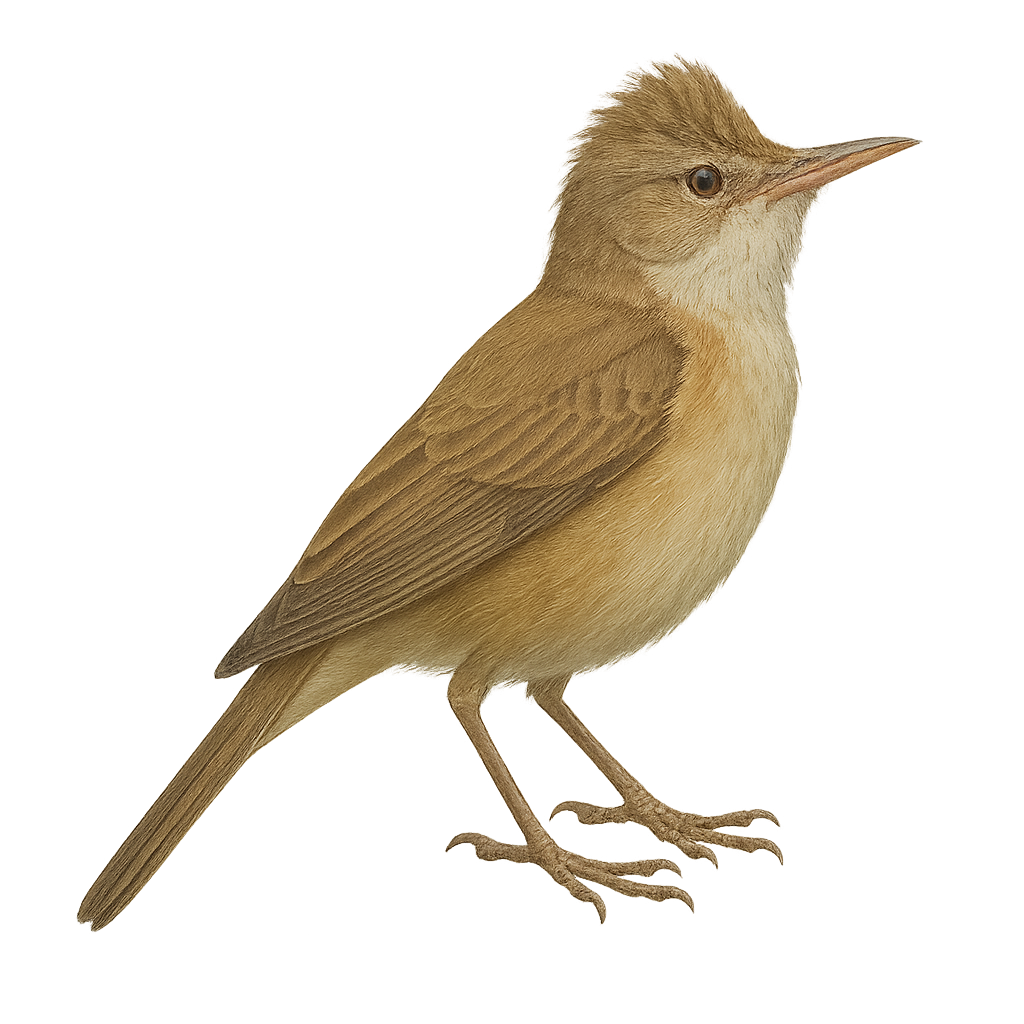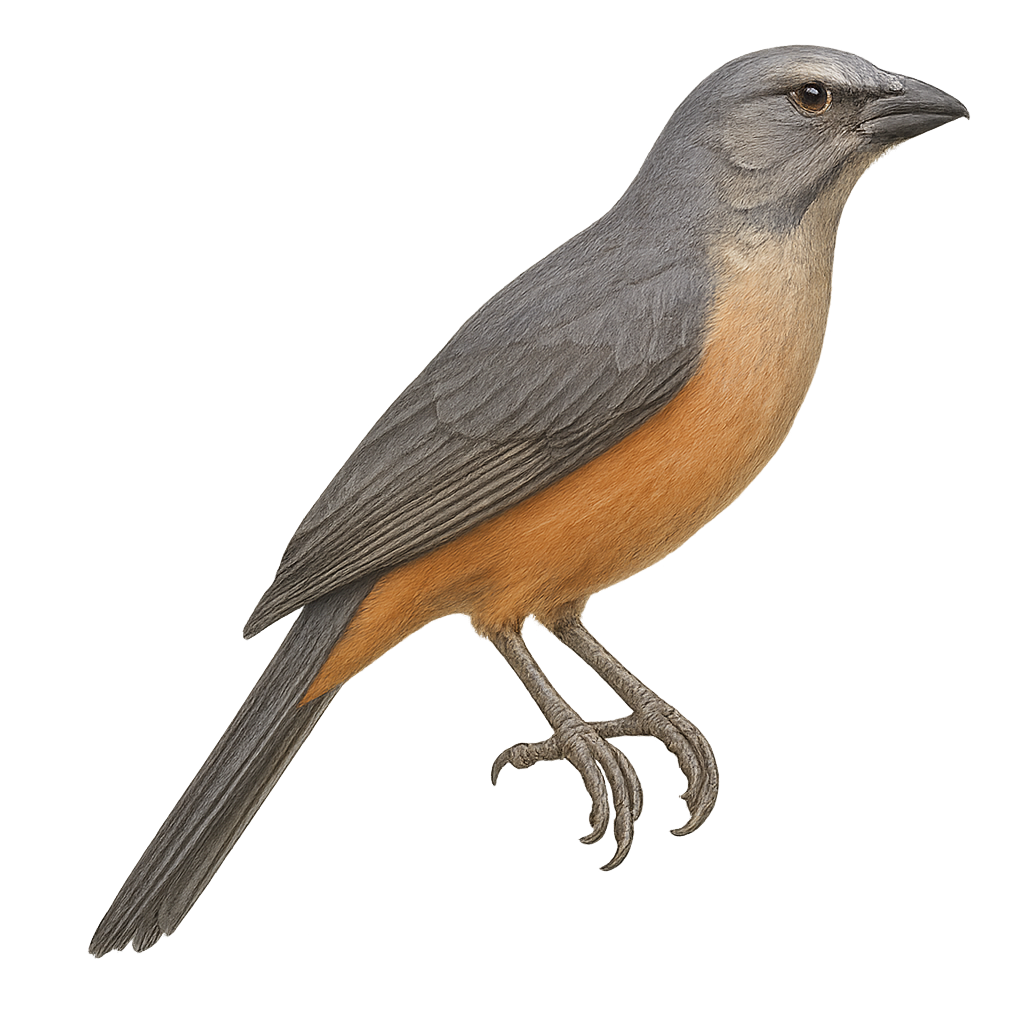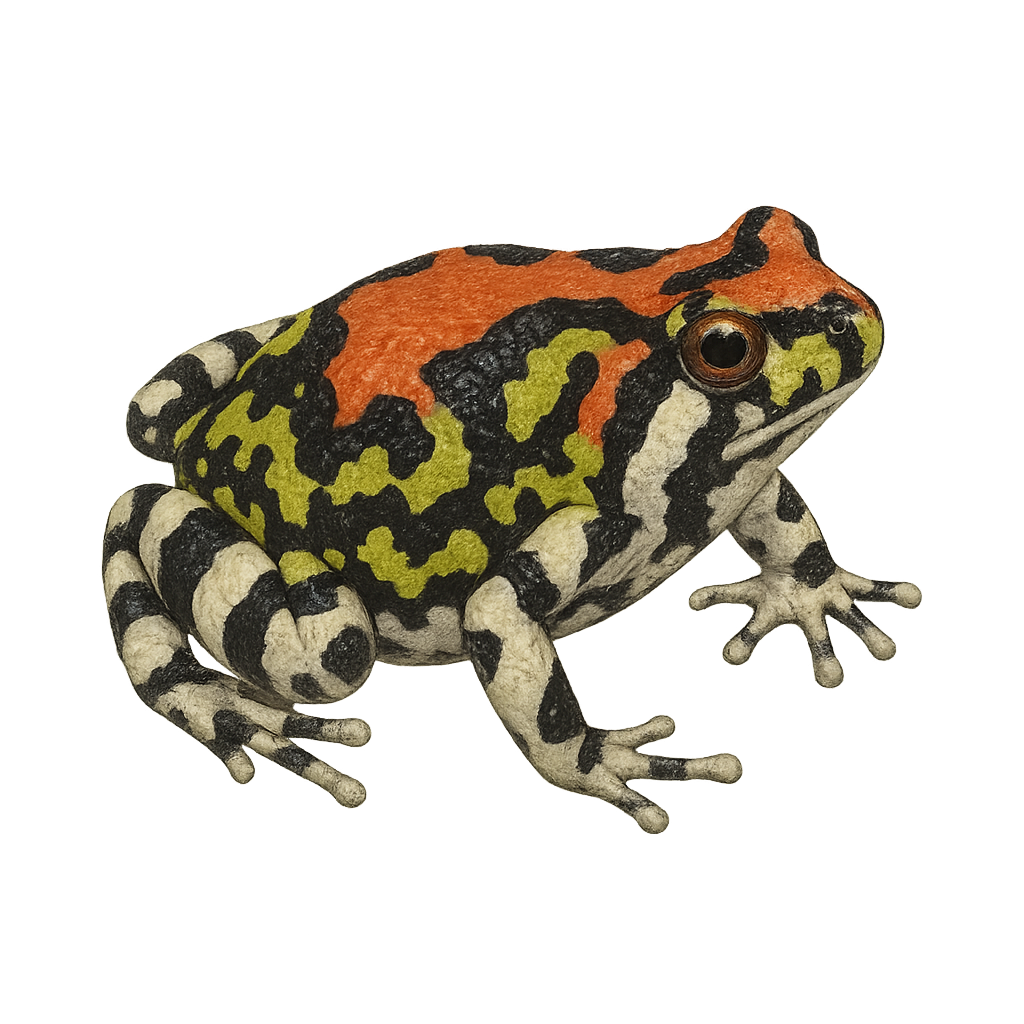The Golden-fronted Woodpecker, Melanerpes aurifrons, is a medium-sized bird, measuring about 20 to 24 cm in length. It is easily recognizable by its distinctive plumage, featuring a black and white striped back and a head adorned with a golden patch on the forehead. Males have a red crown, while females have a more subdued head. This woodpecker is primarily insectivorous but also feeds on fruits and seeds. It inhabits various environments, including open forests, woodlands, and semi-arid regions from the southern United States to Honduras. Known for its noisy behavior, it often drums on tree trunks.
The Grey-headed Woodpecker is a bird belonging to the woodpecker family, primarily found in Eastern Europe, Asia, and the Middle East. It measures about 25 to 30 cm in length, with a wingspan of 40 to 45 cm, and weighs between 80 and 120 g. Its plumage is mainly gray, with a black and white head, and a red nape in males. It is distinguished by its sharp call and its ability to drill into tree trunks in search of larvae and insects, which are its primary food source. The Grey-headed Woodpecker lives in mixed forests and wooded areas, often nesting in dead or decaying trees. Although it is not considered threatened, the Grey-headed Woodpecker is vulnerable to deforestation and habitat loss.
The Gilded Flicker, or Colaptes chrysoides, is a fascinating bird primarily inhabiting the desert regions of the southwestern United States and northern Mexico. This flicker measures about 29 to 31 cm in length and is distinguished by its golden-brown plumage, black-spotted wings, and red crown in males. It is often observed in arid areas, where it feeds mainly on insects, fruits, and seeds. The Gilded Flicker is known for its characteristic drumming on tree trunks, which it uses to communicate and mark its territory. Although relatively tolerant of human presence, it prefers natural habitats such as saguaro cactus forests and sparse woodlands.
The Golden-cheeked Woodpecker, scientifically known as Melanerpes chrysogenys, is a colorful and fascinating bird primarily found in the dry forests and wooded areas of Mexico. This woodpecker measures about 20 to 22 cm in length and is distinguished by its bright red head, golden cheeks, and black and white back. Males and females have similar plumage, although males have a more pronounced red hue on the head. They are often observed drumming on tree trunks in search of insects, their main food source, although they also consume fruits and seeds. Their social behavior is interesting, as they can be seen in small family groups.
The Green Woodpecker is a large bird from the woodpecker family, primarily found in deciduous forests and parks in Europe. It measures about 30 to 35 cm in length, with a wingspan of 45 to 50 cm, and weighs between 200 and 250 g. Its plumage is primarily green, with yellow underparts and a red head in males, while females have a less prominent red patch. The Green Woodpecker is distinguished by its piercing call, which it uses to mark its territory. It primarily feeds on ants and their larvae, which it finds in soft soils and under tree bark, using its beak to pierce the ground and trunks. This bird is an excellent climber and spends much of its time on the ground searching for food. While its population remains relatively stable, the Green Woodpecker can be threatened by habitat loss due to intensive farming and deforestation.
The great grey shrike is a small predatory passerine of 22–26 cm with pale grey-brown plumage, a black and white head marked by a broad mask, and pale underparts. It inhabits open habitats with scattered bushes, woodland edges and hedgerows, feeding on insects, small birds and rodents taken from perches.
The Gray-crowned Flycatcher, or Tolmomyias poliocephalus, is a small passerine bird in the Tyrannidae family. It is primarily found in the humid tropical forests of South America, particularly in the Amazon. This bird is distinguished by its gray head contrasting with its olive-green back and pale yellow belly. It is often seen alone or in small groups, feeding on insects caught in flight. Its song is a soft, repetitive trill. Although discreet, it plays an important role in the ecosystem by controlling insect populations. Its ability to adapt to different forest habitats allows it to maintain a stable population despite increasing deforestation.
The Grey Plover is a coastal bird primarily found along beaches and sandy areas in Europe, North Africa, Asia, and North America. It measures about 25 to 30 cm in length, with a wingspan of 60 to 70 cm, and weighs between 100 and 150 g. Its plumage is mainly silver-gray on the back with a white belly, and its wings are marked with black spots. During the breeding season, the Grey Plover displays brighter colors, with black plumage on the chest and head. It primarily feeds on marine worms, insects, and small crustaceans found in the sand, often near the high tide line. While its population remains relatively stable, this species can be threatened by habitat loss, pollution, and human disturbances at its breeding sites.
The Golden Plover is a migratory bird primarily found in tundra areas, open grasslands, and coastal regions in Europe and Asia, as well as in North America's coastal areas during winter. It measures about 25 to 30 cm in length, with a wingspan of 60 to 70 cm, and weighs between 150 and 250 g. Its plumage is primarily golden and black, with characteristic patterns on the chest and abdomen, and lighter coloring on the underside. During the breeding season, the male displays particularly bright plumage adorned with golden spots. The Golden Plover primarily feeds on small invertebrates, insects, and marine worms, which it finds by probing the ground or walking slowly in search of food. While its population remains stable, it can be threatened by habitat loss and human disturbances, particularly during the breeding period.
The Green-fronted Lancebill, or Doryfera ludovicae, is a captivating small bird belonging to the Trochilidae family. This hummingbird is noted for its striking plumage, featuring a metallic green head and a body with shades of blue and green. It is primarily found in the humid forests of mountainous regions in Central and South America, where it feeds mainly on nectar, but also on insects caught in flight. Its long, slender bill is perfectly adapted to reach the nectar of tubular flowers. The Green-fronted Lancebill is a diurnal bird, active mainly at dawn and dusk. Although its conservation status is currently assessed as "least concern," deforestation and habitat loss pose potential threats to its population.
The Greenish Warbler, Phylloscopus trochiloides, is a small insectivorous passerine bird in the Phylloscopidae family. It is primarily olive green on the upper parts with a paler, often whitish or yellowish underside. Its song is melodious and complex, making it easily identifiable during the breeding season. It inhabits coniferous and mixed forests, as well as shrubby areas in mountainous regions. A migratory bird, it winters in South Asia. Its adaptability to various habitats and generally suspicious behavior make it an interesting bird for both amateur and professional ornithologists to observe.
The Golden Dove, or Ptilinopus victor, is a bird endemic to the tropical forests of certain Pacific islands. It is recognizable by its striking plumage, with a golden hue on the nape contrasting with the rest of its body, usually metallic green. This medium-sized pigeon measures about 30 cm in length. It primarily feeds on fruits, seeds, and occasionally insects. Its natural habitat is threatened by deforestation and the introduction of invasive species. It is often seen in pairs or small groups, and its soft, melodious voice is a distinctive sign of its presence in the dense canopy.
The Great Shearwater, or Ardenna gravis, is a medium-sized seabird belonging to the Procellariidae family. It is mainly observed in the North Atlantic, where it migrates long distances between its breeding grounds in the southern hemisphere and feeding areas in the northern hemisphere. This bird is recognizable by its brown and white plumage, with a dark head and sturdy beak. It primarily feeds on fish and squid, which it captures by skillfully diving into the water. The Great Shearwater is an excellent glider, using air currents to travel great distances with minimal effort. Its population is considered stable, although it is sensitive to environmental changes and marine pollution.
The green tree python is an arboreal snake native to the rainforests of New Guinea and northern Australia. It is easily recognized by its vibrant green color, which helps it blend into the foliage. This python primarily feeds on small mammals, birds, and reptiles, which it captures through ambush. Although non-venomous, it kills its prey by constriction. It is a species that can be very shy, often hiding in trees and foliage.
The Golden-headed Quetzal, or Pharomachrus auriceps, is a striking bird known for its vibrant plumage and presence in the humid tropical forests of Central and South America. This quetzal is distinguished by its golden head, metallic green wings, and long tail. It is often found in cloud forests, where it primarily feeds on fruits, but also insects and small vertebrates. Its melodious song and spectacular courtship displays make it a subject of interest for ornithologists and photographers. Although its habitat is threatened by deforestation, it remains relatively common in some protected areas.
The Gliding Tree Frog is a medium-sized nocturnal arboreal frog, measuring between 5 and 8 cm. It has bright green dorsal coloration during the day, turning darker at night, with orange or bluish hues on its flanks and limbs. Its large red eyes and webbed feet enable it to "fly" from tree to tree by gliding. This species inhabits humid tropical forests in Costa Rica, Panama, Colombia, and Ecuador, between 15 and 750 m elevation. It resides in the canopy and descends to the ground to breed in temporary pools formed by rains. Breeding is explosive, with thousands of individuals gathering in a single night to lay eggs on leaves overhanging water. Tadpoles fall into the water upon hatching. Although listed as Least Concern by the IUCN, this species is locally threatened by deforestation and habitat loss.
The Gambian pouched rat, scientifically known as Cricetomys gambianus, is a large rodent native to sub-Saharan Africa. It is easily identifiable by its long tail, large ears, and pointed snout. This nocturnal creature inhabits various environments such as forests, savannas, and agricultural areas. It is renowned for its ability to detect landmines due to its exceptional sense of smell. Although it can be considered a pest in some regions, it plays an important ecological role as a seed disperser and insect predator. Its longevity and adaptability make it an interesting subject for researchers.
The gray fox, or Urocyon cinereoargenteus, is a medium-sized canid known for its silver-gray fur, reddish legs, and bushy tail. Unique among canids, it can climb trees, allowing it to escape predators and forage for food. It primarily inhabits dense forests, scrublands, and mountainous regions of North and Central America. An omnivore, it feeds on small mammals, birds, insects, and fruits. The gray fox is generally nocturnal and crepuscular, preferring to avoid humans. Although widely distributed, it is often elusive and difficult to spot.
The greater rhea is a large flightless bird in the family Rheidae, standing 1.4–1.7 m tall and weighing 20–27 kg, with grey plumage and a long neck. It inhabits grasslands, savannas and wet meadows of South America, feeding on plants, seeds, insects and small vertebrates. During the breeding season, males dig shallow nests in the ground and alone incubate the 20–40 eggs laid by multiple females.
The Indian Rhinoceros, also known as the one-horned rhinoceros, is a large species of rhinoceros found primarily in the Indian subcontinent, particularly in India, Nepal, Bangladesh, and Bhutan. It measures about 3.5 to 4 meters in length, with a tail of 60 to 70 cm, and weighs between 2,200 and 3,000 kg. This rhinoceros is easily recognized by its thick, wrinkled skin, with a single horn located on its nose. It primarily feeds on grasses, leaves, and fruits, and lives in a variety of habitats, including grasslands, wetlands, and riverine forests. While its population has long been threatened by poaching and habitat loss, thanks to conservation efforts, the Indian Rhinoceros has experienced some recovery, but it remains vulnerable.
The Greater Painted-snipe, Rostratula benghalensis, is a medium-sized wading bird known for its distinctive plumage and unique behavior. Females, larger and more colorful than males, display vibrant shades of brown, white, and black. This bird favors wetlands, such as marshes and rice paddies, where it feeds mainly on insects, crustaceans, and seeds. The Greater Painted-snipe is noted for its unusual breeding behavior: females are polyandrous and take the lead in courtship. They lay their eggs in shallow nests, which males incubate. Although widely distributed in sub-Saharan Africa, South, and Southeast Asia, this species is sometimes threatened by the loss of its natural habitat.
The Golden-crowned Kinglet is a small, lively bird, easily recognized by its bright yellow crown bordered with black. It primarily inhabits the coniferous forests of North America, where it is often seen darting through branches in search of insects. Its plumage is mainly gray-olive, with darker wings and tail. Despite its small size, it is hardy and can withstand very low temperatures. Its song is a high-pitched, rapid trill, often heard before the bird is seen. The Golden-crowned Kinglet is a sociable bird, sometimes forming mixed flocks with other small bird species.
The golden-crowned kinglet is an incredibly small bird found mainly in dense coniferous forests across Europe and Asia. It is distinguished by its tiny size, olive-green plumage, and the bright yellow patch on its head. This passerine bird is an excellent acrobat, often seen hopping between branches searching for insects and small arachnids. The golden-crowned kinglet is a discreet but highly energetic bird, known for its lively behavior and ability to forage in tight spaces.
The Grey-winged Robin-chat, or Sheppardia polioptera, is a discreet and charming bird found mainly in the humid forests of Central and East Africa. This small passerine, about 15 cm long, is distinguished by its olive-brown plumage and characteristic grey wings. It is often seen in dense undergrowth, where it feeds on insects and small invertebrates. Its melodious and varied song is a delight for birdwatchers. Although its habitat is threatened by deforestation, the species is currently classified as of least concern by the IUCN. The Grey-winged Robin-chat is a shy bird, difficult to observe, but its presence is an indicator of the health of forest ecosystems.
The great reed warbler is an insectivorous passerine and the largest of the European reed warblers, measuring 18.5–20 cm in length with a 24–27 cm wingspan and weighing 25–38 g. It has unstreaked brown upperparts, buffish-white underparts and a pale supercilium. It inhabits dense reed beds, marshes and waterside vegetation, feeding mainly on insects, spiders and small amphibians.
The Grayish Saltator is a medium-sized bird, measuring about 20 to 23 cm in length. It is easily recognizable by its grayish-blue plumage, with a lighter chest and slightly darker wings. Its beak is robust and adapted to its diet, which mainly consists of fruits, seeds, and insects. It is primarily found in tropical and subtropical forests, as well as open wooded areas in Central and South America. The Grayish Saltator is a social bird, often seen in small groups or pairs. It is known for its melodious song, which plays an important role in communication between individuals and territory defense.
The Green-winged Saltator is a medium-sized bird primarily found in the forests and wooded areas of South America. It is easily recognizable by its olive-green plumage and slightly darker wings. Its robust beak is adapted for cracking seeds, although it also feeds on fruits and insects. The song of the Green-winged Saltator is melodious, often heard at dawn. This bird is generally solitary or seen in small groups. It is quite suspicious of humans, which can make observing it a challenge. Its ability to adapt to different habitats allows it to thrive in various environments.
The Garganey is a small dabbling duck measuring between 37 and 41 cm in length with a wingspan of 59 to 67 cm. The breeding male is characterized by a broad white crescent over a reddish-brown head, finely vermiculated gray flanks, and gray-blue scapulars. The female has a cryptic brown-beige plumage with three longitudinal facial stripes. This species inhabits marshes, ponds, and floodplain meadows rich in aquatic vegetation, generally avoiding brackish waters. It feeds mainly on seeds, aquatic plants, mollusks, insects, and small crustaceans. Strictly migratory, it breeds in Europe and western Asia, wintering in sub-Saharan Africa, India, and Southeast Asia. Although listed as Least Concern by the IUCN, it is locally vulnerable due to the loss of wetland habitats.
The Scaphiophryne gottlebei is a frog species endemic to Madagascar, notable for its vibrant colors and limited habitat. It displays a complex pattern of red, green, and black on its back, allowing it to blend effectively among the forest's dead leaves. This species is primarily found in the dry forests and rocky areas of Isalo National Park. Known for its discreet behavior, it can quickly hide under leaves or in crevices. The Scaphiophryne gottlebei is classified as endangered by the IUCN due to the loss of its natural habitat.
The Green-backed Twinspot, Mandingoa nitidula, is a small exotic bird belonging to the Estrildidae family. Native to the tropical forests of Central and East Africa, this bird is particularly admired for its bright plumage and distinctive patterns. Males display a bright green head, contrasting with a body speckled with white spots on a black background. Females, on the other hand, have more subdued colors, predominantly olive green. These birds measure about 10 cm in length and weigh between 9 and 12 grams. They are often seen in small groups, feeding mainly on seeds and insects. Their melodious song and social behavior make them fascinating subjects of study for ornithologists and bird enthusiasts.



